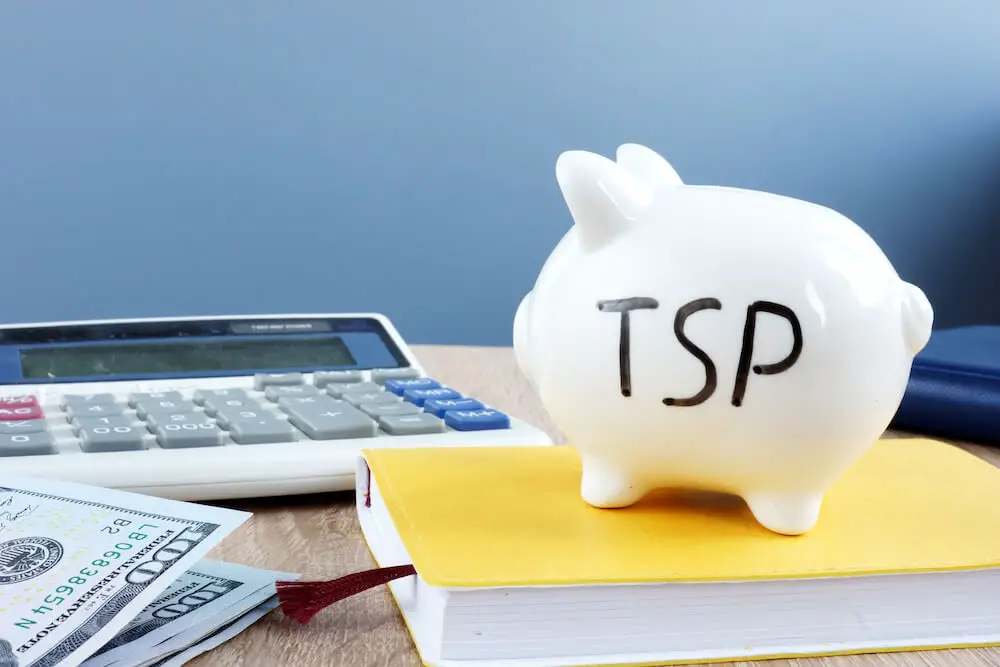Unfortunately, this is no easy question or answer. Let’s start by saying through time and consistency, you could achieve your goals. The goal here is to eventually pay little to no taxes on your TSP as it grows.
But how? Let’s realize that even on day one in your federal career, if you put 100% of your TSP contributions into Roth TSP, and never anything but Roth TSP, the government’s 5% match would always be tax-deferred, meaning it will be taxed later along with the growth on the matched money. You cannot escape some level of tax deferral in your TSP, and that is at least the government’s match to your 5% (provided you are a FERS employee which 99.99% of federal employees now are).
But most employees with large balances have been working a long time and did not have access to Roth TSP until 2013, and even then it took several years to catch on. Consequently, the vast majority of most TSP balances are tax-deferred.
One of the most common questions I am asked is, “Can I convert my balance, or a portion, to Roth TSP?” Inside of TSP, the answer is an emphatic no!
So, what can you do? At ages 73-75, even though your Roth TSP has no tax-deferred money inside of it, the TSP will make you withdraw this money, along with your traditional TSP, according to the RMD schedule (Required Minimum Distributions). I haven’t met a soul yet that wants to lose control of their tax-free money, their Roth money that is.
The solution is to create a tax plan designed to function inside of your tax brackets, goals, and longevity of life but outside of the TSP. This is to arrange for tax-free wealth in your golden years. A tax plan will typically take some time to create, depending on your circumstances.
For instance, if you have a $1,000,000 TSP balance and $950,000 is traditional (which is typical for someone who was aggressively funding Roth TSP for the last few years), then 95% of your money is growing inside of a taxable account. What to do, what to do…?
Since you cannot execute Roth conversions inside of TSP, then you’d have to open both a private IRA and a private Roth account. The traditional TSP funds first have to travel to the IRA, and you must also make sure to avoid potentially massive taxes triggered by withdrawing the funds all at once outside of an IRA. If this were to happen, you could not reinsert the funds into an IRA or a Roth after the 60-day grace period has passed. Once funds have landed at the IRA, a plan can be formed to convert a set amount per year based on your annual tax bracket and multiple other considerations.
These rollovers from TSP cannot happen unless at least 1 of these 2 factors has occurred:
- You have reached age 59 ½ while still working, or
- You have retired from federal service (regardless of age)
Either will create an opportunity to enact a tax plan involving Roth Conversions, but, again, they have to be done outside of TSP. This would have to be a very well-thought-out and calculated plan because if not, this could affect your taxes by 10-12% or possibly even more due to you mistakenly blowing up your tax brackets.
This may not sound like a lot, but 12% of a $100,000 Roth Conversion is another $12,000. I think you’d rather keep that $12,000 than pay it in excessive taxes. Your Medicare Part B premiums could be affected as well by what is called the income-related monthly adjusted amount (IRMAA).
To illustrate, one family withdrew a large sum of money to pay for a condominium. They said they wanted to own it free and clear without a mortgage, and this was back when interest rates were very low. But the amount of interest paid to the bank would be far exceeded by the horrible tax consequences that result if too much money was withdrawn from the tax-deferred TSP.
After ignoring the good counsel of their advisor to speak with their accountant, they withdrew the large sum and withheld no taxes. For the next 3 years, they suffered massively due to a big tax bill, and the only way to satisfy it was to continue to pull out more large sums to pay the tax bill.
What does this have to do with a Tax Plan? Everything, because if you are not considering what tax brackets you are in and the amounts you’ll have to pay without addressing them before creating a taxable event, then it can be costly. But once freed from the taxes, it will be liberating. Once inside the Roth, the money grows tax-free, for the rest of your and your spouse’s lives.





